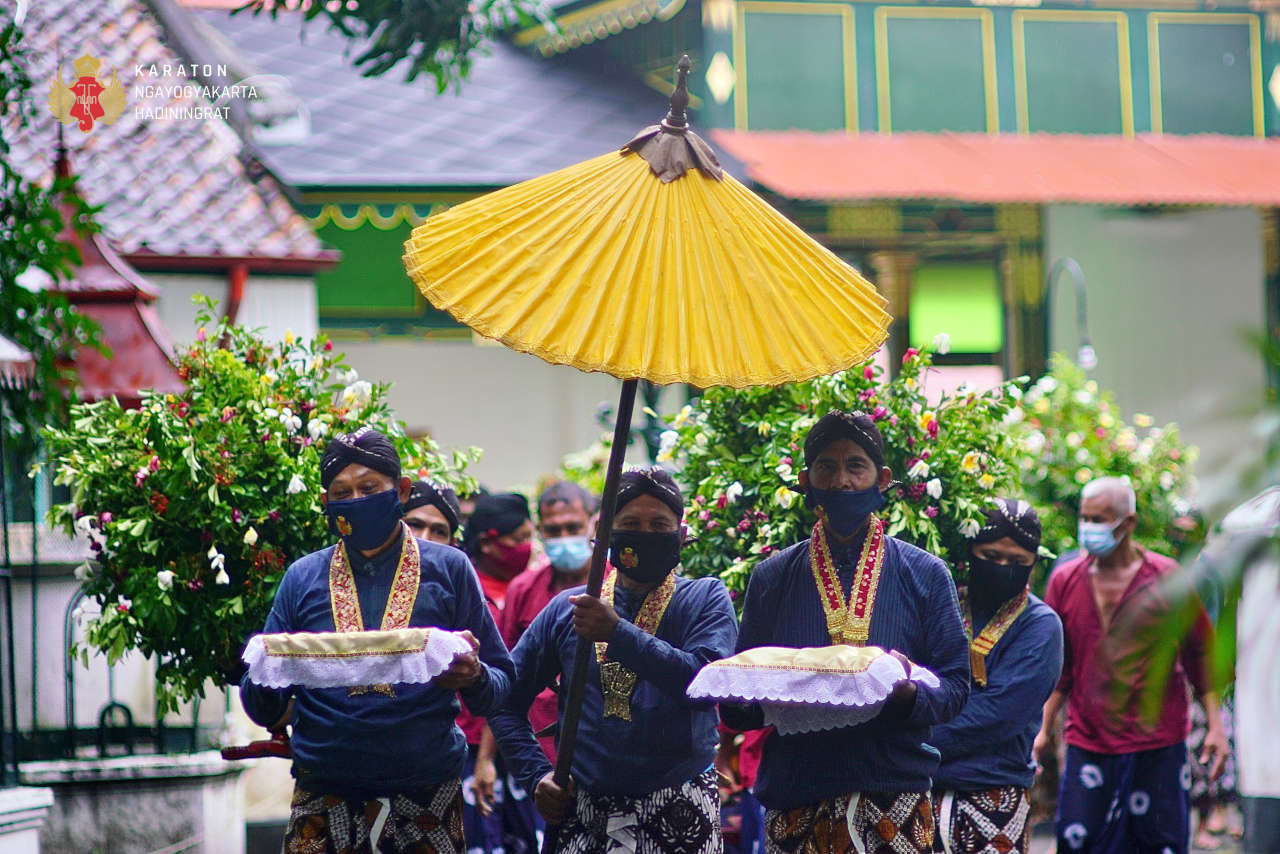Annually, Muslims in Indonesia commemorate Isra' and Mi'raj (الإسراء والمعراج), called as Isra Mikraj in Bahasa Indonesia. The commemoration, held every 27th of Rajab in the Islamic calendar, is observed to mark an event in Islamic history where the Islamic prophet Muhammad undertook a night journey from Makkah to the Al-Aqsa Mosque in Jerusalem, which at that time was under the Byzantine Empire's Heraclian rule, then ascended to Sidrat al-Muntaha, a mystical tree in the seventh heaven, at the boundary of the created universe, and concluded by returning to Makkah. In this mystical journey, the Prophet is believed to have received the command to establish the five obligatory prayers (الصلاة) for Muslims.
This event holds significant historical value for Muslims. Therefore, it is not surprising that this event is commemorated by Muslims, including in Indonesia. In various regions of Indonesia, there are various ways to celebrate Isra' and Mi'raj. All celebrations conducted by Indonesian Muslims carry philosophical meanings rich in Islamic values, such as brotherhood, togetherness, generosity, and piety.
Here are some of the celebrations of Isra' and Mi'raj in Indonesia:
Rajaban

Rajaban (ꦫꦗꦧꦧꦤ꧀) is a celebration held to commemorate Isra' and Mi'raj by the people of Cirebon in West Java. The name of this celebration comes from the month of Rajab, the month in the Islamic calendar when the event of Isra' and Mi'raj took place. This traditional event is carried out by visiting the tombs of Prince Panjunan (Syekh Syarif Abdurrahman) and Prince Kejaksan (Syekh Syarif Abdurrahim) in Cirebon Regency, West Java, then followed by holding religious gatherings at the Keraton Kasepuhan, and concluded by having a communal meal of nasi bogana, a sacred food for the sultanates of Cirebon consisting of boiled eggs, tempeh orek, long beans, shredded chicken, and serundeng.
Nganggung

Nganggung (ڠڠڬوڠ) is a tradition of the Malay people of Bangka in the Bangka Belitung Islands, which involves carrying food from each household to a large gathering place, usually a surau, mosque, or field, in a procession. Each household carries a tray made of zinc containing food, which is then covered with a food cover. This event is filled with prayers and religious lectures tailored to the theme, as besides commemorating Isra' and Mi'raj, this tradition is also commonly practiced by the community to commemorate other major Islamic holidays.
Khataman Kitab Arja

Khataman Kitab Arja (ꦏ꦳ꦠꦩꦤ꧀ꦏꦶꦠꦧ꧀ꦲꦂꦗ) is a tradition carried out to commemorate Isra' and Mi'raj by the Javanese community in Wonoboyo Village, Temanggung Regency, Central Java. This sacred event begins with the opening and brief recitation of tahlil, followed by the recitation of the Arja Book. This book, written in Javanese by Kiai Haji Ahmad Rifa'i al-Jawi, then Indonesian National Hero, using the Pegon script, an Arabic script adapted to write languages in the Java Island, narrates in detail the story of Isra' and Mi'raj. While the clerics recite and complete the book for about two hours, the congregation listens attentively.
Hajad Dalem Yasa Peksi Burak

Hajad Dalem Yasa Peksi Burak (ꦲꦗꦣ꧀ꦝꦊꦩ꧀ꦪꦱꦥꦼꦏ꧀ꦱꦶꦧꦸꦫꦏ꧀) is a tradition carried out to commemorate Isra' and Mi'raj by the Karaton Ngayogyakarta Hadiningrat, the palace of the Yogyakarta Sultanate. The tradition begins with the creation of Peksi Burak, which symbolizes Buraq, a creature resembling a horse that served as the mount of Prophet Muhammad during the Isra' and Mi'raj journey, made of leather and Bali oranges, followed by the creation of a fruit tree and four flower trees. After the symbols of Isra' and Mi'raj are made by female relatives of the Sultan of Yogyakarta and the women of Abdi Dalem, Peksi Burak is prayed for by Abdi Dalem and paraded to the Masjid Gedhe Kauman. The peak celebration takes place in the evening after the Isha prayer, where nobles, Abdi Dalem, and the general public encircle Peksi Burak, then listen to the recitation of the book narrating Isra' and Mi'raj by the Kiai Pengulu solemnly, and conclude with the distribution of fruits from the Peksi Burak symbols to the general public.
Ngurisan

Ngurisan (ᬗᬸᬭᬶᬲᬦ᭄) is a tradition carried out by the Sasak tribe in Lombok, West Nusa Tenggara to commemorate Isra' and Mi'raj and other Islamic holidays. This tradition involves shaving the hair of babies under 6 months old. Dozens of babies, carried by their parents or relatives, are then taken to the mosque to be taken to the Islamic religious leaders, called Tuan Guru, to be prayed for and have their hair shaved. During this ceremony, the congregation present will recite blessings to the Prophet Muhammad.



















